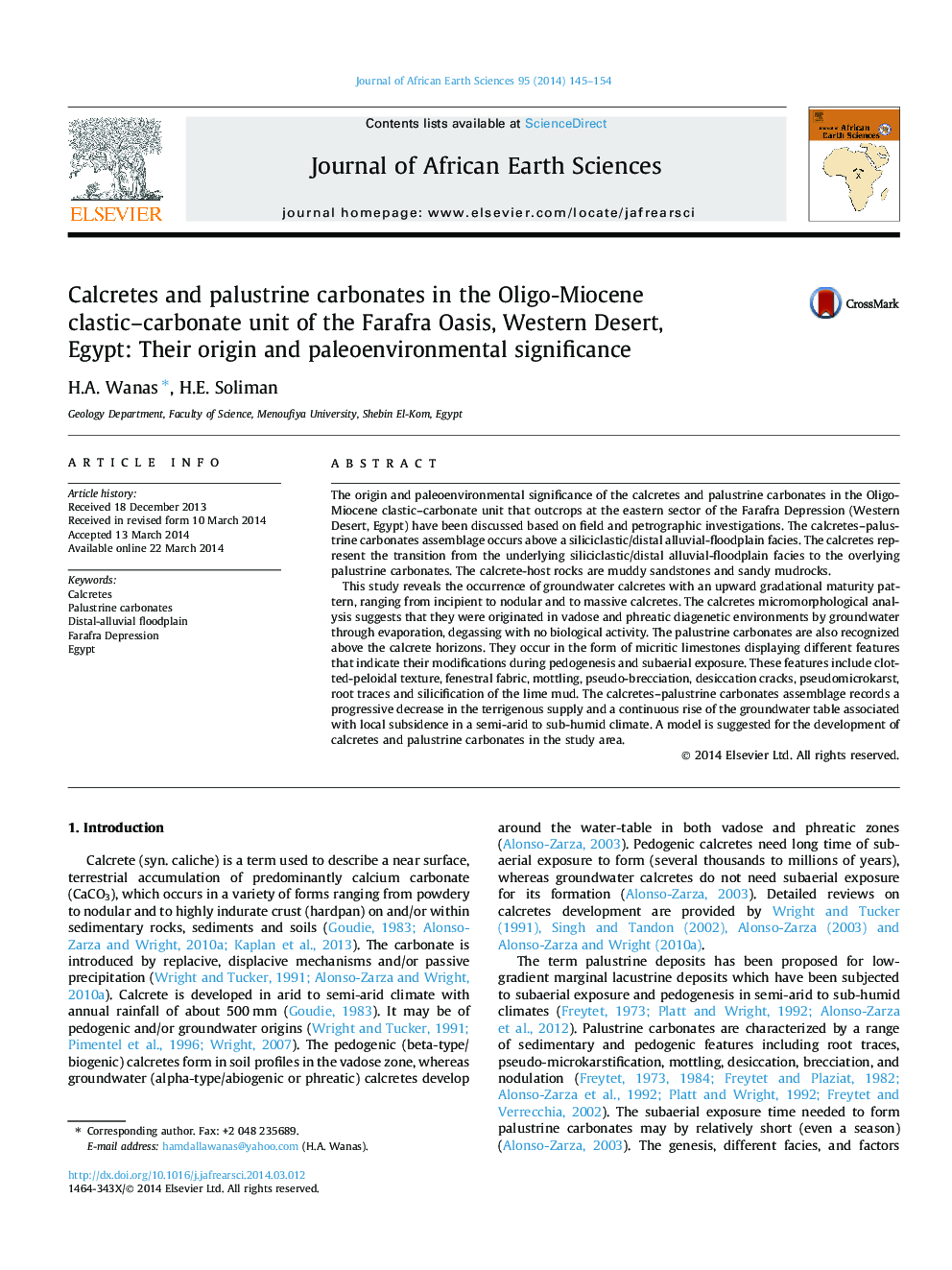| کد مقاله | کد نشریه | سال انتشار | مقاله انگلیسی | نسخه تمام متن |
|---|---|---|---|---|
| 4728824 | 1640211 | 2014 | 10 صفحه PDF | دانلود رایگان |
• This study reveals the occurrence of groundwater calcretes and palustrine carbonates.
• The calcretes are incipient, nodular and massive calcretes.
• The calcretes and palustrine carbonates recorded a progressive decrease in the terrigenous supply.
• They developed during a continuous rise of the groundwater table associated with local subsidence.
• A sedimentological model is suggested to their development.
The origin and paleoenvironmental significance of the calcretes and palustrine carbonates in the Oligo-Miocene clastic–carbonate unit that outcrops at the eastern sector of the Farafra Depression (Western Desert, Egypt) have been discussed based on field and petrographic investigations. The calcretes–palustrine carbonates assemblage occurs above a siliciclastic/distal alluvial-floodplain facies. The calcretes represent the transition from the underlying siliciclastic/distal alluvial-floodplain facies to the overlying palustrine carbonates. The calcrete-host rocks are muddy sandstones and sandy mudrocks.This study reveals the occurrence of groundwater calcretes with an upward gradational maturity pattern, ranging from incipient to nodular and to massive calcretes. The calcretes micromorphological analysis suggests that they were originated in vadose and phreatic diagenetic environments by groundwater through evaporation, degassing with no biological activity. The palustrine carbonates are also recognized above the calcrete horizons. They occur in the form of micritic limestones displaying different features that indicate their modifications during pedogenesis and subaerial exposure. These features include clotted-peloidal texture, fenestral fabric, mottling, pseudo-brecciation, desiccation cracks, pseudomicrokarst, root traces and silicification of the lime mud. The calcretes–palustrine carbonates assemblage records a progressive decrease in the terrigenous supply and a continuous rise of the groundwater table associated with local subsidence in a semi-arid to sub-humid climate. A model is suggested for the development of calcretes and palustrine carbonates in the study area.
Figure optionsDownload as PowerPoint slide
Journal: Journal of African Earth Sciences - Volume 95, July 2014, Pages 145–154
